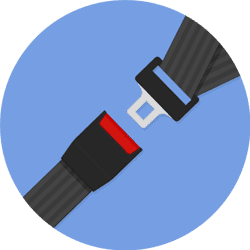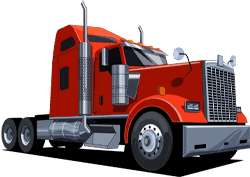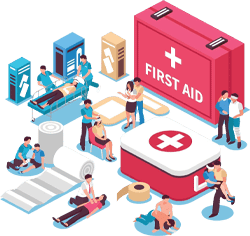 How to set up Cor and Se-Cor Programs for Beginners
How to set up Cor and Se-Cor Programs for Beginners
In this article, you will learn how to set up a safety program for Cor or Se-Cor from scratch. You will learn how to research the certifying partner you want to use, you will learn how to sign up with the certifying partner, you will learn how to build the program, and finally, you will learn how to do an audit on the safety program.
 How to find the correct certifying partner for Cor and Se-Cor Programs
How to find the correct certifying partner for Cor and Se-Cor Programs
I’m going to put links for the certifying partners in each province all you have to do is click on the province you’re interested in and there will be a list of certified partners for you to choose from including phone numbers and email addresses. If you are in the construction industry, then the construction safety Association in your province is likely your best bet.
Province of Alberta
Province of BC
Province of Saskatchewan
Province of Manitoba
Province of Ontario
 In some provinces work safely and decide what organization or safety Association you must join. For example in British Columbia work safe BC which certifying partner you belong with. In most provinces, however, the choice is simply up to you. You want to make sure the certifying partner you pick has similar companies as yourself in it. Often they will have a list of core holders that you can look at and determine what type of companies belong to the certifying partner. If they are similar to your company then you’re in the right place.
In some provinces work safely and decide what organization or safety Association you must join. For example in British Columbia work safe BC which certifying partner you belong with. In most provinces, however, the choice is simply up to you. You want to make sure the certifying partner you pick has similar companies as yourself in it. Often they will have a list of core holders that you can look at and determine what type of companies belong to the certifying partner. If they are similar to your company then you’re in the right place.
 The next thing you need to do is to register your company with the certifying partner. This is most often done online. Before you start you will need your WCB number and your industry classification or industry code because all these programs are run by Worker’s Compensation. The next thing you will want to do is to take the required training course or courses that the certifying partner requires in order for you to meet the certification standards. Once you take this course you will have a better understanding of what they want from you as far as Cor and Se-Cor Programs goes.
The next thing you need to do is to register your company with the certifying partner. This is most often done online. Before you start you will need your WCB number and your industry classification or industry code because all these programs are run by Worker’s Compensation. The next thing you will want to do is to take the required training course or courses that the certifying partner requires in order for you to meet the certification standards. Once you take this course you will have a better understanding of what they want from you as far as Cor and Se-Cor Programs goes.
Once you’ve taken the training course your next job is to start building the safety manual. Most often when you take the training course they will give you some templates that you can use for various policies in your safety program.
 Developing your safety manual
Developing your safety manual
the first thing you want to do before developing your safety manual is to download the audit from the certifying partner’s website. You will use the questions in the audit to develop the order in which you build your health and safety manual. For example usually, in the first section of any Se-Cor or Cor audit, they ask about your mission statement or safety policy. So that means the beginning of your manual will start with your safety policy and so on. The whole purpose of doing it this way is to make sure you cover everything from the safety audit in your safety program. This way when it’s time to audit the safety program the documents will be found in the same order as the questions are asked in the safety audit. This proves to be very efficient and makes auditing the program much easier.
 Determining the Positions within your Company
Determining the Positions within your Company
By positions, I’m talking about things like a driver, mechanic, shop labor, administrative, welder, field technician, and any other specific jobs in your company. Now that we’ve developed the positions in the company we need to do what is called a formal hazard assessment for each position. A formal hazard assessment takes into account every different task that might accompany a job. For a driver, you have driving as a task but you also have loading and unloading the truck, greasing the unit, putting tire chains on the unit and taking them off, changing the oil, doing pre-trip and post-trip inspections on the unit, and various other tasks associated with driving a commercial vehicle. All of these tasks are covered in the formal hazard assessment and the hazards associated with those tasks are also identified and the risks mitigated by corrective actions.
 An example of this is wearing your seatbelt while driving a commercial vehicle. This reduces the risk of significant injury should the vehicle have an accident or go off the road. We have also introduced policies like no talking on the cell phone while driving so that drivers are not distracted and have accidents. Even a yearly CVIP is to make sure that the unit you’re driving is safe to do so.
An example of this is wearing your seatbelt while driving a commercial vehicle. This reduces the risk of significant injury should the vehicle have an accident or go off the road. We have also introduced policies like no talking on the cell phone while driving so that drivers are not distracted and have accidents. Even a yearly CVIP is to make sure that the unit you’re driving is safe to do so.
What is the difference between a formal hazard assessment and a job hazard analysis?
 A formal hazard analysis covers every aspect of the job in one form. This is great from an administrative point of view because you can see all the hazards associated with the job and fine control measures to mitigate the dangers before anybody even drives a truck for example.
A formal hazard analysis covers every aspect of the job in one form. This is great from an administrative point of view because you can see all the hazards associated with the job and fine control measures to mitigate the dangers before anybody even drives a truck for example.
 A job hazard analysis only covers one specific task of many. You would have a job hazard analysis for driving and it would only talk about the risks of driving a commercial vehicle. It would not talk about loading or unloading the truck as that would be its own job hazard analysis. Job hazard analysis has you list the steps of doing the job, list the hazards associated with each step in column two, and then a brief outline of the control measures you will use to control the hazards associated with the task.
A job hazard analysis only covers one specific task of many. You would have a job hazard analysis for driving and it would only talk about the risks of driving a commercial vehicle. It would not talk about loading or unloading the truck as that would be its own job hazard analysis. Job hazard analysis has you list the steps of doing the job, list the hazards associated with each step in column two, and then a brief outline of the control measures you will use to control the hazards associated with the task.
It should be noted that formal hazard assessments are fairly new and are not used in every province. Alberta uses them but British Columbia does not. In British Columbia, you would do job hazard analysis for each of the tasks associated with the job.
 What our Safe Work Practices
What our Safe Work Practices
Safe work practices are more of an informal way of writing down the steps of doing particular jobs. A safe work practice does not talk about any hazards whatsoever. This is mainly used as a teaching tool so that a new worker can quickly see the steps needed to complete a task. A safe work practice should be used in conjunction with the job hazard analysis and should never be used by itself. It is a teaching tool so that a worker can see quickly the different steps needed to complete a task. Ideally, the worker would be with a mentor who would do the task first while the worker observes and then let the worker do the task while the mentor observes and makes comments on how to do it better or safer.

How to complete a training matrix for your company’s jobs
For example, going back to the truck driving job what do we want when we’re hiring a truck driver? How much experience do we want for our new driver? Do we want him to have off-road experience since we are delivering our products in off-road situations? How many demerits of their driver’s license will we allow? This is also a factor from your own insurance company as they will lay out guidelines for what to expect in a driver.
 We go through this process for every job in the company. We decide how much experience we want, is there any specific education that is required example a diploma or degree? Knowing what you want in an employee before you advertise and hire one really helps you focus on what is important. For example, if you are requiring six months of experience you would state that in your advertising verbiage and avoid getting applications from a bunch of unqualified people applying
We go through this process for every job in the company. We decide how much experience we want, is there any specific education that is required example a diploma or degree? Knowing what you want in an employee before you advertise and hire one really helps you focus on what is important. For example, if you are requiring six months of experience you would state that in your advertising verbiage and avoid getting applications from a bunch of unqualified people applying
Both the cor and the Se-cor programs have questions about the qualifications and how you vet new workers coming into the company. They will want to make sure that all the processes you put into place when hiring new workers are actually being used and not ignored. A small piece of advice if you don’t intend to follow it don’t put it in your program because you will be penalized if you do.
 What are the training requirements for average workers?
What are the training requirements for average workers?
Almost all workers you hire are going to need WHMIS training and first aid if you work in the oil patch. You will need at least two first aiders for any size of a company since you’re going to need a designated first-aider for the shop and for the office. The law states that when you send workers out into the field that there needs to be a first aider amongst the workers. Depending on how far you go into the field you may need first aiders depending on the type of work you do. If you’re sending people out into the wilderness it is a very good idea to get wildlife awareness training. Other types of training that are common would-be full protection, BOP training in some cases, forklift training, and manlift training. These types of training courses depend on the equipment you use when you’re working. This is why you often develop training requirements for the different positions so that you know when you hire somebody that’s going to use a forklift, or a man lifts that you need to get the training done beforehand.
 How long do I have to run the program before I can do an audit?
How long do I have to run the program before I can do an audit?
With most certifying partners in Western Canada anyway you need three months of documentation before you can call for a Cor audit or submit a Se-Cor audit. I believe in Ontario they want you to run the program for a full 12 months before you can receive an audit. Ontario only offers a Cor program and does not offer any type of small employer program currently.
 How do I do my Se-Cor audit?
How do I do my Se-Cor audit?
First of all, a Se-Cor audit is a snapshot of your safety program over a certain period of time. They do not want binders and boxes of documents. If you are doing an audit for the first three months then you would submit one per month of each document they want. If you’re doing an audit for a complete year for your Se-Cor program you would submit one document per quarter or four documents for the year. For example, you would submit 4 office inspections, one per quarter, you would submit 4 shop inspections, one per quarter.
 First, read the instructions at the front of the audit. There are specific rules about how long you have to complete the audit. In Alberta, you only have 45 days from the first day of the audit until it has to be submitted. Normally speaking when I do an audit there is a 15-day period of time from the first day of the audit to the day that I intend to submit it. This gives you lots of time if it gets lost in the mail or lost at the certifying partners’ office. You go through the audit and answer each question by either handwriting in the answer or you can use a word doc and type in your answers. Each question must have an answer of yes. Once you submit the audit and you can do this electronically and in some cases by mail. The Alberta construction safety Association doesn’t allow you to mail anything anymore it must be digital. It is easier sending a digital one because they get it the same day.
First, read the instructions at the front of the audit. There are specific rules about how long you have to complete the audit. In Alberta, you only have 45 days from the first day of the audit until it has to be submitted. Normally speaking when I do an audit there is a 15-day period of time from the first day of the audit to the day that I intend to submit it. This gives you lots of time if it gets lost in the mail or lost at the certifying partners’ office. You go through the audit and answer each question by either handwriting in the answer or you can use a word doc and type in your answers. Each question must have an answer of yes. Once you submit the audit and you can do this electronically and in some cases by mail. The Alberta construction safety Association doesn’t allow you to mail anything anymore it must be digital. It is easier sending a digital one because they get it the same day.
 Once you submitted your audit you should hear something back within two weeks of the submission. If you pass the audit you will get a congratulations email telling you that you will get your certificate mailed to you from the Alberta government. You will also get a review of your audit which will contain suggestions for improvement for next year. Save this To your Se-Cor audit file as you will definitely need to fix the deficiencies before submitting next year’s audit
Once you submitted your audit you should hear something back within two weeks of the submission. If you pass the audit you will get a congratulations email telling you that you will get your certificate mailed to you from the Alberta government. You will also get a review of your audit which will contain suggestions for improvement for next year. Save this To your Se-Cor audit file as you will definitely need to fix the deficiencies before submitting next year’s audit




